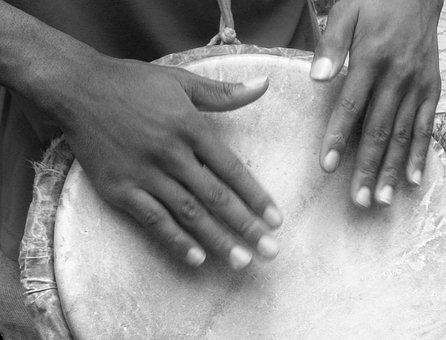 I was at dance practice last night but its wasn't the usual dance practice you might be picturing. It was a Cup'ik (Chewpick) practice. That means they used a standard 4/4 beat with a slight variation but it was usually 4/4.
I was at dance practice last night but its wasn't the usual dance practice you might be picturing. It was a Cup'ik (Chewpick) practice. That means they used a standard 4/4 beat with a slight variation but it was usually 4/4.In the middle of doing a song about two men who went whale hunting one day and ran aground on a sand bar, my thoughts flittered to this piece that was rather complex.
It was like 2/4, then 3/4, back to 2/4, then 9/8 thrown in and it was crazy. It was extremely easy to get lost in if you were not paying any attention. In the middle of all this, I realized it's all a form of math.
In a sense, time signatures are a fraction where the top number or numerator indicates the number of beats in one measure of music while the bottom number or denominator indicates the type of note. So a 4/4 means there are four beats in a measure and each note is a quarter note.
Not quite the same as parts of a whole but not all fractions are parts of a whole. Look at ratios which are comparisons and time signatures which provide a different type of information. Neither one is really considered Part of a Whole.
Furthermore, musical notes and rests are the visual representation of the time signature. Any musician can look at the music itself, count the number of notes, look at the value of each note to determine the time signature without looking at it. This is much like mathematics where its numbers are like the time signature and the representations of those numbers are the notes.
There is a mathematical equation for determining the note value based on the number of flags on the note. The equation is 2^(-2-n )where n = the number of flags. If its a whole note, it is 2^0 power or 1 beat where as if it has 4 flags, it would be 2^(-2-4) = 2^-6 or 1/64.
In addition, most pieces of music have repeated sections in them denoted by a repeat sign. Most pieces of music have some sort of repeating pattern just like math has. I know I always take a few minutes to look for the repeating pattern in the music before playing it so I don't miss any.
Then you have the vibrating sound waves that are tuned to a certain standard of Hertz. Middle C is found at about 262 Hertz while other notes are at a different frequency. If the instruments are not tuned properly, they some times sound off.
Even Fibinocci contributes to music. If you look at a piano, you can see it with the 13 keys that make up an octave. Five of the keys are black and eight are white and the black keys are grouped in a group of two followed by a group of three. 2 +3 = 5, 5+8 = 13. Usually a scale is made up of 8 notes where the foundation of a chord is based on the 3rd and 5th notes.
It is said that Mozart based many of his piano sonatas on the golden ratio. In addition, the violin's parts are also based on the golden ratio and provides the basis for saxophone mouth pieces, speaker wires, and even used when designing certain cathedrals.
So math is found in so many places in music. Let me know what you think, I'd love to hear. Have a great day.
No comments:
Post a Comment